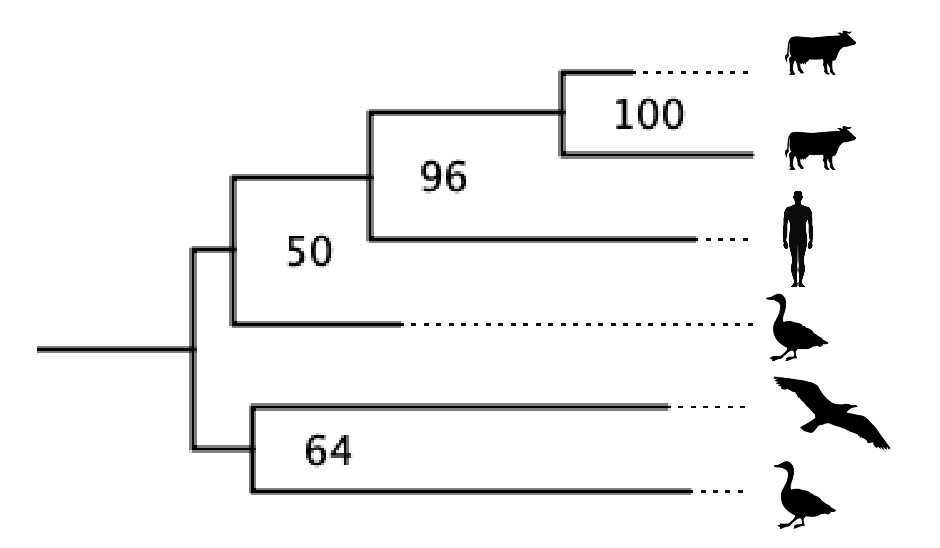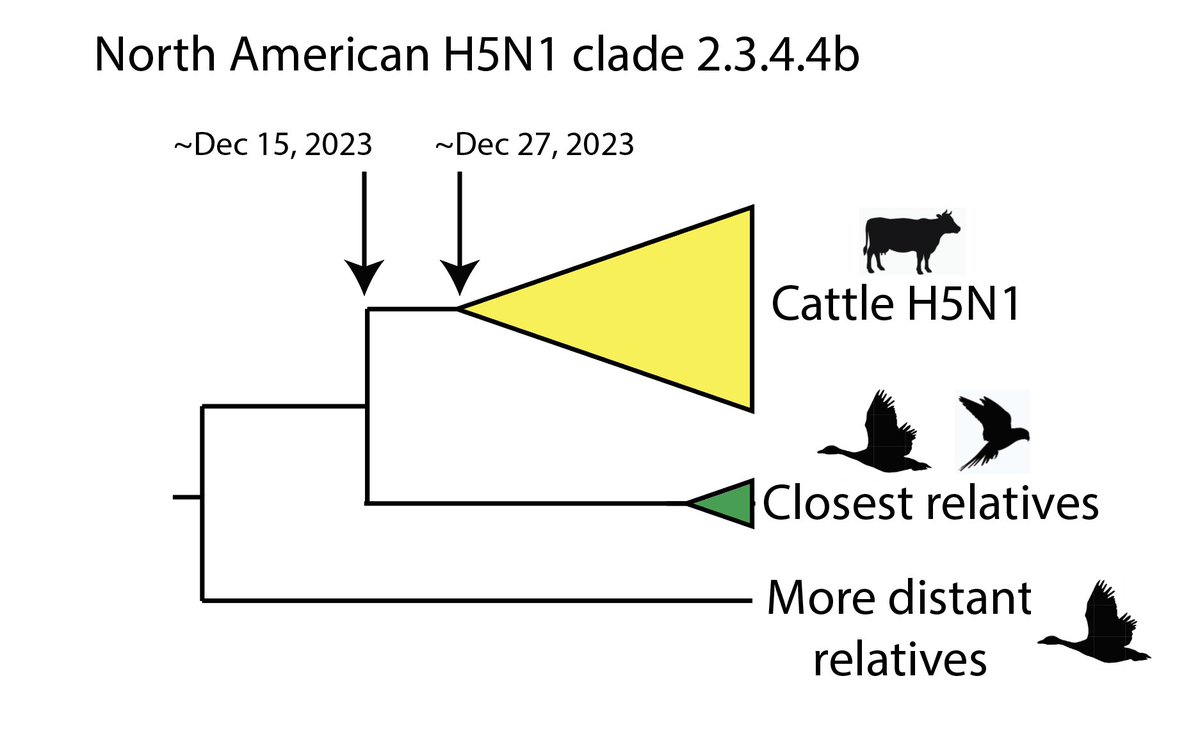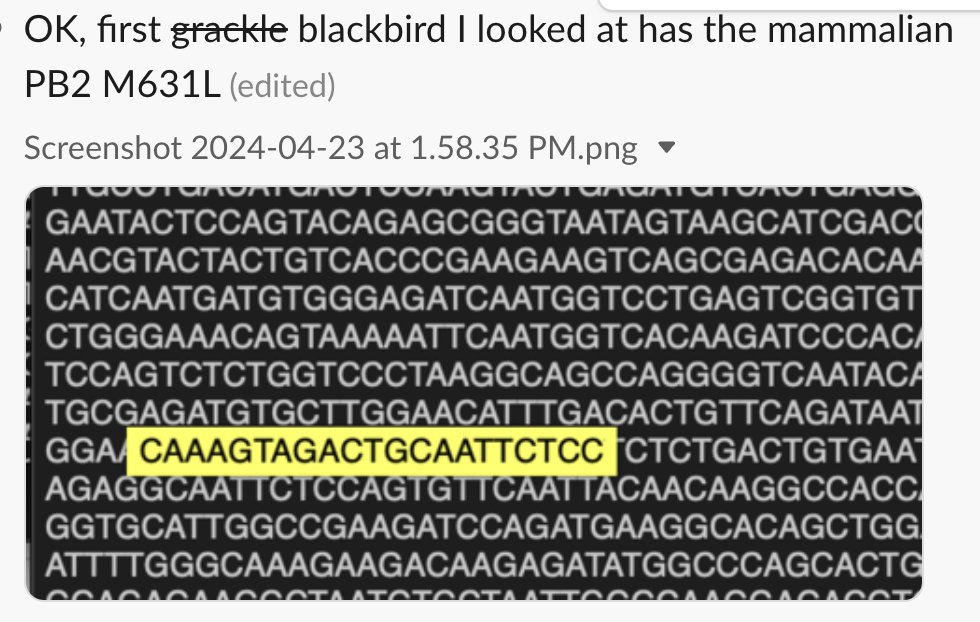SARS-CoV-2/COVID-19 in Italy in September 2019: the most important finding yet on the origin of the pandemic*.
(*or an error with big consequences.)
A thread. 1/24
papers.ssrn.com/sol3/papers.cf…
(*or an error with big consequences.)
A thread. 1/24
papers.ssrn.com/sol3/papers.cf…
The study, led by Dr. Elisabetta Tanzi, also includes heavy-hitters of molecular evolution @sergeilkp and Sudhir Kumar. I greatly admire both but respectfully disagree with their conclusions here and feel it is important to explain why. 2/
Dr. Tanzi led an earlier study claiming to find evidence of SARS-CoV-2 in a boy in Northern Italy who presented with measles symptoms in Nov 2019. 3/
wwwnc.cdc.gov/eid/article/27…
wwwnc.cdc.gov/eid/article/27…
Although that paper claims that her lab was "designated SARS-CoV-2 RNA-free", my correspondence with her indicates that that was not the case. A positive control from a local patient was used, presumably to develop the in-house nested PCR approach used. 4/ 

Nested PCR is super-sensitive. It involves a first-round amplification of a PCR-product, then a second-round amplification of a subregion of that amplified PCR product. 5/
It is also *highly* prone to false positives: massive amounts of first-round product can contaminate later PCR reactions unless strict protocols are in place.
Especially true when a positive control is amplified before or at the same time you screen an "unknown" sample. 6/
Especially true when a positive control is amplified before or at the same time you screen an "unknown" sample. 6/
Let's turn to the current study.
Again, an in-house nested PCR assay was used - to detect <500-nucleotide regions coding for (1) NsP3, (2) RdRp, (3) Spike, (4) another Spike region.
Although not mentioned, I assume a positive control was used the validate the assay. 7/
Again, an in-house nested PCR assay was used - to detect <500-nucleotide regions coding for (1) NsP3, (2) RdRp, (3) Spike, (4) another Spike region.
Although not mentioned, I assume a positive control was used the validate the assay. 7/
The authors looked at hospitalized patients in Italy with measles-like rashes who were measles and rubella Dx-negative.
They report SARS-CoV-2 RNA in 11/44 cases from the "pre-pandemic" period, Aug 2019-Feb 2020. The earliest in Sept 12, 2019, plus 6 in Oct, 1 in Nov. 8/
They report SARS-CoV-2 RNA in 11/44 cases from the "pre-pandemic" period, Aug 2019-Feb 2020. The earliest in Sept 12, 2019, plus 6 in Oct, 1 in Nov. 8/
(They also report SARS2 RNA in 2/12 such cases from Mar 2020-Mar 2021 who had also tested negative for SARS2.)
Crucially, in each "pre-pandemic" case that yielded SARS2 RNA spanning the three mutations characterizing the spring 2020 Italian outbreak, they were present. 9/
Crucially, in each "pre-pandemic" case that yielded SARS2 RNA spanning the three mutations characterizing the spring 2020 Italian outbreak, they were present. 9/
This is the famous B.1 lineage, with D614G, which dominated the European outbreak then spread worldwide. These key mutations are:
C3037T
C14408T
A23403G/D614G 10/
C3037T
C14408T
A23403G/D614G 10/
In other words, instead of some ancestral genome, as might be expected for samples collected months before the earliest ones in Dec 2019 in Wuhan, they have highly derived genomes typical of what was circulating in Northern Italy in spring 2020. 11/
I have published a study, with Joel Wertheim, @suchard_group, @LemeyLab @jepekar and others that indicates that the B.1 variant jumped from China to Italy on or around Jan 28 2020. 12/
science.sciencemag.org/content/370/65…
science.sciencemag.org/content/370/65…
This helped lay to rest the idea that the Italian outbreak descended from a Jan-Feb 2020 one in Germany, which was extinguished through (guess what?) testing, tracing, quarantine, isolation.
The German lineage B virus was just *one* mutation different than the Italian one. 13/
The German lineage B virus was just *one* mutation different than the Italian one. 13/
It lacked C14408T.
We suspected that a B.1 progenitor with this mutation existed in China.
Sure enough, I *just* noticed that one does: hCoV-19/Zhejiang/HZ103/2020 EPI_ISL_422425.
Indeed, B lineage viruses with the full progression to B.1 were present in PRC by Jan 2020... 14/
We suspected that a B.1 progenitor with this mutation existed in China.
Sure enough, I *just* noticed that one does: hCoV-19/Zhejiang/HZ103/2020 EPI_ISL_422425.
Indeed, B lineage viruses with the full progression to B.1 were present in PRC by Jan 2020... 14/
Just C3037T;
C3037T + A23403G/D614G; and
C3037T + A23403G/D614G + C14408T.
That makes Fig. 2 from Tanzi et al quite nonsensical. The figure portrays a stepwise evolution of the B.1 lineage in Italy, with B.1. present by Oct 2019. 15/
C3037T + A23403G/D614G; and
C3037T + A23403G/D614G + C14408T.
That makes Fig. 2 from Tanzi et al quite nonsensical. The figure portrays a stepwise evolution of the B.1 lineage in Italy, with B.1. present by Oct 2019. 15/

This would necessitate dispersal of each intermediate, plus B.1 itself, *back* to China from Italy. Or an independent progression of the identical 3 mutations in each country.
Both options strike me as *much* less likely than a nested-PCR false positive. 16/
Both options strike me as *much* less likely than a nested-PCR false positive. 16/
Another important part of the study: none of the 11 pre-pandemic SARS2 RNA+ patients had detectable RNA using the CDC Real-Time RT-PCR assay.
What are the chances of hitting 11 true positives without a single one yielding a qRT-PCR positive result? 17/
What are the chances of hitting 11 true positives without a single one yielding a qRT-PCR positive result? 17/
The authors may be aware of the weirdness of this result, because they posit these early variants may bind the Spike protein more weakly than later variants.
But they are derived from viruses that were circulating in China that already possessed high affinity for hACE2. 18/
But they are derived from viruses that were circulating in China that already possessed high affinity for hACE2. 18/
Not just that: those key mutations in the genomic data indicate that they are extremely "fit" B.1 viruses! Those are the ones that rapidly displaced almost all the other lineages around the world! 19/
Presence of the virus in Italy in June-Aug 2019, as proposed, also flies in the face of molecular clock estimates calibrated over and over again at about 2 changes per genome per month. 20/
A study I co-authored with Joel Wertheim, who led the work, @jepekar, @niemasd and Konrad Scheffler uses that molecular clock, plus realistic epidemiological parameters, to infer an origin of the Wuhan/Hubei outbreak in October 2019 at the earliest. 21/
science.sciencemag.org/content/372/65…
science.sciencemag.org/content/372/65…
The idea that a derived, B.1, variant was present in Italy in Sept 2019, but remained unnoticed for some 6 months, also flies in the face of epidemiological data – e.g. a doubling time of 2-5 days in the absence of mitigation efforts. >35 doublings = millions of infections. 22/
Of the serological data, @deeptabhattacha notes:
"We find very, very few people who do not develop neutralizing antibody titers of at least 20....They provide no numbers on the semi-quantitative Eurimmun serology assay....This seems really dubious to me." 23/
"We find very, very few people who do not develop neutralizing antibody titers of at least 20....They provide no numbers on the semi-quantitative Eurimmun serology assay....This seems really dubious to me." 23/
I admit I can't explain their negative results in negative controls. But my money is on the positives being false positives.
The Chinese government is keen to assert that the pandemic started outside China. I fear this study will play right into that narrative. 24/24
The Chinese government is keen to assert that the pandemic started outside China. I fear this study will play right into that narrative. 24/24
Correction to tweet 20. Their June-August 2019 estimate was for the ancestor of all human cases, not for the Italian ones. They report the presence of SARS2 RNA in Italy as early as Sept 12 2019.
Sorry -- should read "these early variants' Spike protein may bind hACE2 more weakly than later variants."
• • •
Missing some Tweet in this thread? You can try to
force a refresh








